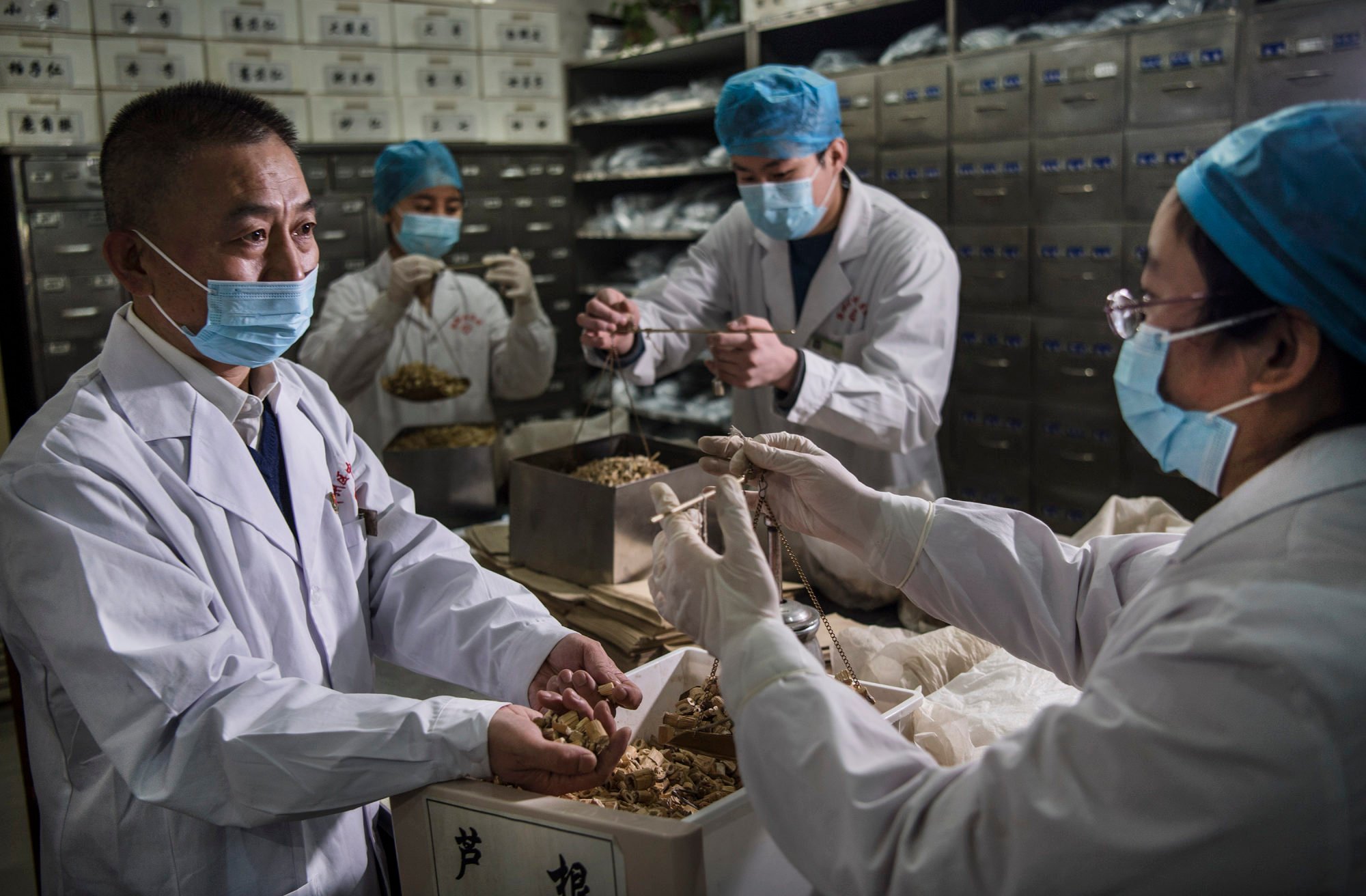
Scientists find traditional Chinese medicine is based on a complex network of proteins – 3,000 years before modern science
- Researchers have mapped proteins associated with symptoms against target proteins of herbs to reveal TCM’s hidden scientific foundation
- It is the first study to translate TCM into modern medical knowledge, and to validate traditional medicines’ effectiveness on a ‘systematic level’
However, a paper published on October 28 in Science Advances unveiled a previously unknown medicinal framework that reveals the hidden scientific foundation of TCM.
There is an absence of “disease” as a concept in TCM, as patients are diagnosed and treated based on symptoms. This makes it challenging to connect with modern medicinal practices, according to the paper.
Aspirin and morphine are examples of commonly used drugs that are derived from plants – and that have been used in traditional medicinal practices long before the modern day drugs were derived.
But while individual TCM herbs had been clinically researched and applied, the practice as a whole “is often considered a myth”, the paper said.
Studies have sought to provide a scientific basis for the practice, but the team found that many were limited to studying individual herbs and did not describe the “totality” of interactions.
So the researchers set out to establish a network medicine framework, which maps the proteins associated with symptoms and the target proteins of chemicals in herbs on to the human protein interaction network.
Proteins that are associated with a symptom tend to cluster together on the network, as both symptoms and diseases are rarely caused by the expression of a singular gene but rather the interactions of multiple.

The team found that the closer the herb target was to a cluster of symptoms, the more likely the herb was able to treat the symptom based on overlap.
For example, the TCM prescription of Yin Chai Hu (or stellaria root) is recognised to treat fever by the Chinese Pharmacopoeia – China’s official source on modern and traditional medicinal drugs compiled by the Ministry of Health. On the network, the target of Yin Chai Hu is located close to fever-associated proteins. It is known to treat fevers by regulating inflammatory processes.
By observing the network of herbs and symptoms, the researchers found that TCM doctors tended to prescribe herbs with targets in proximity to the symptoms on the network.
The proximity pattern that the herbs and symptoms followed was “highly similar to modern drug-disease relations”, Gan Xiao, first author of the paper and a researcher at the Nanjing University of Information Science and Technology, told the South China Morning Post in an email with input from the research team.
“TCM and modern medicine may share similar roots in their molecular network mechanisms,” Gan said.
This was the first study to translate traditional practice into modern biomedical knowledge, and to validate the effectiveness of TCM herbs on a “systematic level”, the paper said.
Hong Kong TCM practitioners ‘can play bigger role’ in primary healthcare
To validate their network, the team collected medical data from more than 1,900 liver cirrhosis patients from a hospital of traditional medicine in the central Chinese city of Wuhan.
In the treatment of 114 symptoms, the team found 86 closely located herb-symptom pairs where the group of patients who were prescribed the herbs had a significantly higher recovery rate than the control group.
Through analysing the data, the team also made a list of 50 herb-symptom pairs that mapped closely on the network and appeared effective based on patient data, but that were not yet recorded in the Chinese Pharmacopoeia.
Gan said the team hoped this study could prompt more research into these predicted pairings, and that they would be willing to partner with labs and clinics to study them.
“We hope that by revealing the scientific foundations of traditional medicine, we can better utilise the wisdoms of traditional medicine to create better treatment methods and novel drugs,” Gan said.
Despite the scepticism TCM has faced from proponents of modern treatments, China has continued to promote its practices alongside the adoption of modern medicine by opening TCM centres and schools in countries around the world, according to the State Council.
In 2021, President Xi Jinping said that China had relied on TCM to “treat diseases and save lives for thousands of years” and urged efforts to interpret its mechanisms from the perspective of modern science.


